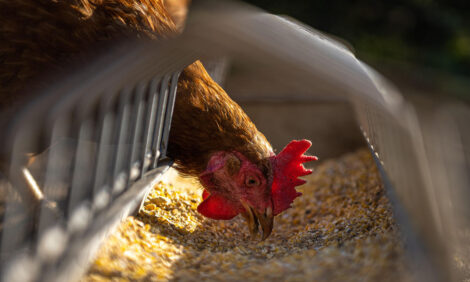



Mycotoxins: When Prevention is Worthwhile
The occurrence of mycotoxins is ubiquitous, which is why it represents a worldwide problem for the animal industry. Even with the use of prevention techniques in the field or during storage, it is actually impossible to avoid mycotoxins completely in agricultural commodities.Thanks to modern analytical methods and growing interest in this field of research, more than 400 different mycotoxins have currently been identified. The toxicity of different mycotoxins brings serious risks to humans and animals. Mycotoxicoses are animal or human diseases caused by mycotoxin ingestion, inhalation or skin contact. In animals, these range from immunosuppression and performance effects to hepatotoxic, nephrotoxic, neurotoxic, dermal, carcinogenic, reproductive, teratogenic and gastro-intestinal effects, depending on animal-, environmental- and toxin-related factors.
Mycotoxins and Decreased Performance
Poultry are farm animal species sensitive to mycotoxins as they suffer from several toxic effects. Broiler chickens are more resistant to aflatoxins than other poultry like ducks, geese or turkeys.
Predominately, aflatoxins are the most immune-suppressive. Type A trichothecenes (T-2 toxin, HT-2 toxin, diacetoxyscripenol) are of major concern to the poultry industry as they cause economic losses in productivity. They are highly toxic to poultry, especially for chickens, because of the LD50 values (2mg per kg for diacetoxyscirpenol and 4mg per kg for T-2 toxin). Particularly, T-2 toxin reduces feed intake, body weight, egg production and causes oral lesions.
Young chicks and turkey poults are highly sensitive to ochratoxins. These nephrotoxins can suppress feed intake, growth and egg production. In addition, they cause poor egg-shell quality.
Fumonisins are associated with spiking mortality in poultry. Signs of dietary fumonisin are decreased body weight and average daily weight gain as well as increased gizzard weights. In comparison to other species like pigs, poultry are less affected by zearalenone and also appear to be less sensitive to type B trichothecenes such as deoxynivalenol.
Mycotoxins Increase Costs of Poultry Production
Modern broiler operations are under enormous pressure to produce chicken meat at the lowest possible cost. Feed conversion, growth rate, mortality and hatchability are all monitored carefully and strategies are constantly reviewed to maximise efficiencies. As production is fine-tuned, there is increased attention placed on the effect of mycotoxins on the bird. Consumption of even low levels of mycotoxins can lead to decreased feed consumption, poor growth rate and increased susceptibility to disease challenges. Higher levels lead to clinical signs such as beak and intestinal lesions, fatty liver, kidney disorders and mortality.
However, the effects of mycotoxins in poultry depend upon the age, physiological state and nutritional status of the birds at time of exposure. Unfortunately, mycotoxins often occur in low concentrations that are difficult to detect, interactions between individual mycotoxins are not well characterised and unidentified mycotoxins may be causing sub-optimal performance.
The dilemma for broiler producers is to counteract the risks associated with mycotoxins, against the cost of ensuring that they do not adversely affect bird performance.
Prevention is More than Treatment
Although extensive efforts and preventive actions are taken during growing, harvesting and storage periods, the likelihood of mycotoxin contamination is real. Therefore, successful detoxification procedures after harvest are important. Detoxification procedures are divided into three categories: physical, chemical and biological (adsorption and biodegradation) methods.
Deactivation of mycotoxins
The addition of adsorbent materials to animal feeds is a very common method to prevent mycotoxicosis, especially aflatoxicosis. These compounds bind the toxin during the digestive process in the gastrointestinal tract, resulting in a reduction of toxin availability absorbed into the blood stream. Efficacious adsorption of mycotoxins requires that polar groups of the adsorbent and the mycotoxins are in suitable positions to bind together. As a result, only a few mycotoxins can be adsorbed efficiently, e.g. aflatoxins.
So far, no single adsorbent tested has been effective against most types of mycotoxins. Usage of binders, for example, resulted in almost total protection against aflatoxicosis but limited efficacy against zearalenone and ochratoxin and hey provide practically no protection against trichothecenes.
Biological detoxification of mycotoxins by microorganisms and/or enzymes has been researched for over 30 years. This method is based on the deactivation of mycotoxins directly in the gastrointestinal tract and offers a very specific, irreversible and efficient way of detoxification. Consequently, less or non-adsorbable mycotoxins have to be treated by enzymatic deactivation and only a combination of different strategies will lead to success.
Successful Mycotoxin Risk Management
Mycofix® product line represents a complex solution for successful mycotoxin risk management. The bio-transformation may become the technology of choice, as enzymatic reaction offers a specific, irreversible and very efficient way of detoxification that leaves neither toxic residues nor undesirable by-products. The elimination of adsorbable mycotoxins, such as aflatoxins and ergot alkaloids, can be achieved through adsorption while selected plant and algae extracts that counteract the effects of non-degradable mycotoxins complete the picture for the successful control of mycotoxins.
June 2012








